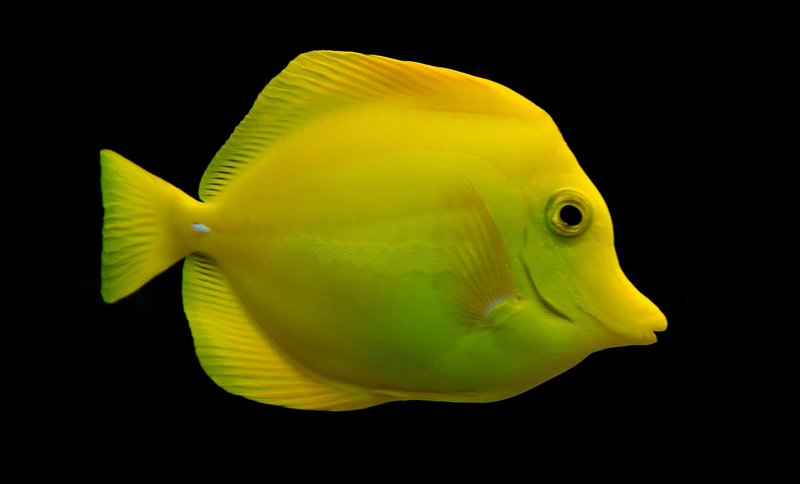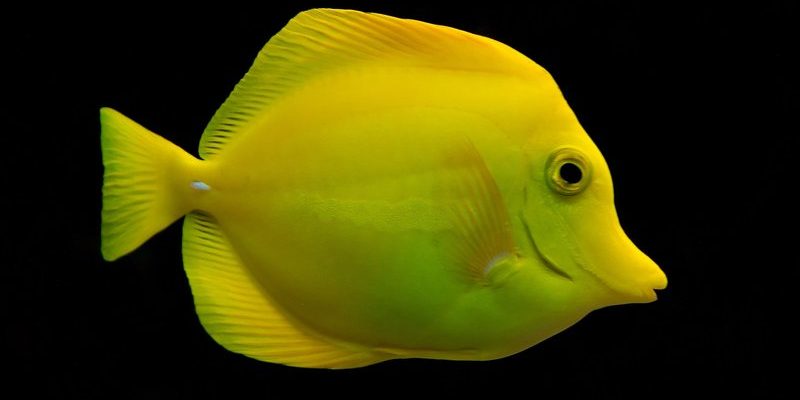
In the wild, Yellow Tangs can live anywhere from 5 to 10 years, but their lifespan can vary significantly in the confines of an aquarium. This is influenced by factors like tank conditions, diet, and overall care. Let’s explore this topic further and dive into what you can do to ensure your Yellow Tang enjoys a long and healthy life.
Understanding Yellow Tang Lifespan
Yellow Tangs are a type of surgeonfish, native to the coral reefs of the Pacific Ocean. They have a reputation for being hardy and relatively easy to care for, making them a popular choice for both beginners and experienced aquarists alike. The average lifespan of a Yellow Tang in captivity tends to range from 10 to 20 years, given the right conditions. However, it’s crucial to note that this isn’t a guarantee; several factors come into play.
The environment you create for your fish is paramount. A well-maintained aquarium with stable water parameters, proper filtration, and regular cleaning can extend their lifespan significantly. You might be wondering how much effort goes into this; it’s more manageable than you might think, especially if you stay consistent with your routine.
The Role of Water Quality
Water quality is crucial for any fish and can greatly affect the lifespan of your Yellow Tang. Fish are sensitive to changes in their environment. Here are some key aspects of water quality:
- pH Levels: Yellow Tangs thrive in a pH range of 8.1 to 8.4. Regular testing helps maintain this balance.
- Temperature: Keep the water temperature stable, ideally between 75°F and 80°F. Sudden changes can stress your fish.
- Ammomia and Nitrite Levels: These should be as close to zero as possible. High levels of these compounds can be toxic.
Regular water changes and a good filtration system will help maintain these conditions. By safeguarding water quality, you’re creating a safe haven for your Yellow Tang to thrive.
Feeding Your Yellow Tang for Longevity
Feeding is another critical component that impacts how long your Yellow Tang can live. In the wild, these fish primarily graze on algae in their natural habitat. In an aquarium, providing a balanced diet will not only keep them healthy but can also prolong their lifespan.
You should aim to offer a variety of food sources:
- Algae Sheets: This is their favorite! Look for spirulina or nori sheets.
- Pellets and Flakes: High-quality marine fish pellets or flakes can round out their diet.
- Frozen Foods: Offer occasional treats like brine shrimp or mysis shrimp for protein.
A varied diet helps ensure your Yellow Tang gets the nutrition it needs. Remember, overfeeding can lead to health issues, so try to stick to a schedule of feeding once or twice a day with portions they can consume in a few minutes.
Tank Size and Environment
Tank size matters a great deal when it comes to the lifespan of your Yellow Tang. These fish can grow to be around 8 inches long and are active swimmers. Ideally, you should provide at least a 75-gallon aquarium for a single Yellow Tang. A larger tank allows for more swimming space and helps reduce stress.
Aside from size, consider decorating the tank appropriately. Incorporating live rock and plenty of hiding spots can create a more natural environment, helping to mimic their ocean habitat. Plus, this setup can provide areas for them to explore, which keeps them active and stimulated.
Tank Mates
Choosing the right tank mates is also essential. Yellow Tangs can be territorial, especially with other surgeonfish. Consider these tips when selecting tank mates:
- Avoid Similar Species: Stay clear of other tangs to prevent aggression.
- Peaceful Fish: Look for community fish that are calm and won’t challenge their space.
- Anemones and Corals: These can provide hiding spots and create a beautiful environment, but ensure they are compatible with your fish.
With the right setup, your Yellow Tang can enjoy a peaceful home alongside its tank mates, promoting a healthy, stress-free life.
Health Monitoring and Regular Maintenance
Regular health checks and maintenance are vital for ensuring your Yellow Tang lives a long life. Keep an eye out for any changes in behavior, eating habits, or physical appearance. Signs of stress can include rapid gill movement, hiding more than usual, or a lack of appetite.
To maintain a healthy aquarium:
- Weekly Water Testing: Check parameters like pH, ammonia, nitrate, and nitrite.
- Routine Water Changes: Aim for a 10-20% water change weekly to keep conditions optimal.
- Observe Behavior: Watching your fish can give you clues about their health; playful and active tangs are likely happy tangs!
If you notice any health issues, consult a knowledgeable veterinarian or a local fish store expert. Proactive monitoring can save your Yellow Tang from potential problems down the line.
Stress Management and Environmental Factors
Stress can significantly impact the lifespan of your Yellow Tang. Changes in water quality, aggressive tank mates, or inadequate hiding spaces can cause undue stress. Let’s look at ways to minimize it:
- Stable Environment: Keep lighting and temperature consistent. Sudden fluctuations can be jarring.
- Adequate Space: Ensure that your tank is spacious enough for swimming and hiding.
- Careful Introductions: When adding new fish, do so gradually to avoid shocking your Yellow Tang.
By understanding and minimizing stressors, you encourage a long and happy life for your Yellow Tang.
So, there you have it! With proper care, diet, and a well-maintained environment, your Yellow Tang can thrive for 10 to 20 years in your aquarium. The key is to approach tank management thoughtfully, keeping a close eye on their health and happiness.
Becoming a pet owner comes with the joy of making new friends in the aquatic world, and ensuring that your Yellow Tang lives a long life is a rewarding experience. Remember, a healthy, happy fish makes for a beautiful centerpiece in your underwater paradise. Happy fishkeeping!

